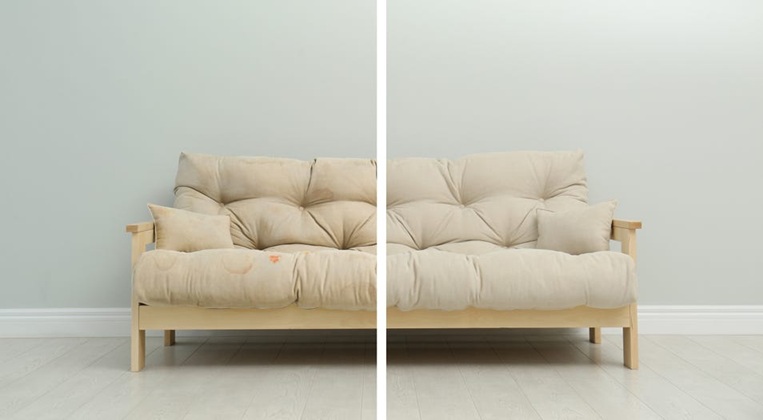The search for reliable sofa and chair upholstery for homeowners contemplating furniture restoration recalls an older tradition, one where craftspeople repaired rather than replaced, and quality mattered more than convenience. This practice, rooted in centuries of upholstery history stretching back to medieval Europe, has witnessed remarkable transformations. What began as a luxury reserved for nobility has evolved into an accessible service that preserves both family heirlooms and contemporary pieces.
The Historical Context of Upholstery Craft
Upholstery as we know it emerged during the Renaissance, when comfort became a consideration rather than a luxury. Before the 16th century, even wealthy households sat on hard wooden benches softened only by loose cushions. The development of padded, permanently upholstered furniture marked a significant cultural shift.
The craft evolved through distinct periods. Victorian upholsterers created heavily padded, ornate pieces. The Arts and Crafts movement favoured simpler lines and honest construction. Mid-century modernism stripped furniture to essential forms, yet still required skilled upholstery. Each period left techniques that inform contemporary practice.
Why Sofas and Chairs Merit Professional Restoration
The decision to restore rather than replace furniture involves more than economics. Quality construction, increasingly rare in contemporary mass production, justifies preservation. Sofas built with hardwood frames, eight-way hand-tied springs, and proper joinery can serve multiple generations if maintained properly.
Modern furniture often employs engineered wood, stapled joints, and sinuous springs designed for shorter lifespans. A well-made vintage sofa, properly restored, outlasts several replacements whilst maintaining superior comfort and character.
Environmental factors add urgency to restoration choices. Furniture disposal creates substantial waste. Singapore alone generates thousands of tonnes annually. Restoration reduces this burden whilst preserving considerable energy and resources.
Common Furniture Requiring Upholstery Services
Certain pieces appear repeatedly in workshops, each presenting distinct challenges:
- Three-seater sofas, the workhorses of living spaces, showing wear on arms and seat cushions
- Armchairs and wingback chairs requiring specialised techniques for curved surfaces
- Dining chairs facing daily use and inevitable spills
- Ottomans and footstools serving multiple functions
- Antique chaise longues demanding period-appropriate restoration
- Office chairs combining upholstery with mechanical components
Each category demands different expertise. A craftsperson skilled in flat dining chair seats may lack experience with complex curves of a Victorian settee.
Evaluating Furniture for Restoration Potential
Not every piece merits restoration investment. Frame quality stands paramount. As one experienced Singapore craftsman observed, “The frame reveals everything. Solid timber frames justify any fabric investment. Particleboard frames belong in the bin, not the workshop.”
Assessment involves systematic examination:
- Frame construction, checking for solid hardwood versus engineered materials
- Joint integrity, testing for wobbling or separation
- Spring condition, noting rust, breakage, or loss of tension
- Padding compression, identifying areas requiring replacement
- Sentimental value, accounting for inheritance or emotional attachment
Structural soundness determines worthiness. Frames with minor issues can be repaired. Extensive damage argues against restoration.
Understanding the Restoration Process
Professional sofa and chair upholstery follows established sequences refined over centuries. Initial inspection identifies all issues, preventing surprises.
The process unfolds systematically:
- Complete disassembly, removing fabric, padding, and components
- Frame repairs addressing joints, cracks, or structural weaknesses
- Spring work including retying or replacement
- Webbing installation providing foundational support
- Padding application using foam, batting, or traditional materials
- Fabric cutting with precise measurements and pattern matching
- Expert fitting ensuring proper tension and smooth surfaces
- Finishing details including piping, buttons, or decorative nails
Each stage requires specific skills. Quality restoration cannot be hurried.
Fabric Selection Considerations
Choosing appropriate upholstery fabric involves balancing numerous factors. Durability ratings measured in double rubs indicate wear resistance. Domestic use typically requires 20,000 to 30,000 rubs minimum. Heavy use demands higher ratings.
Natural materials like linen and cotton offer breathability and traditional aesthetics but may wear faster. Synthetic blends provide enhanced durability and stain resistance. Performance fabrics incorporate advanced treatments protecting against spills, fading, and wear.
Climate considerations matter significantly. In Singapore’s humidity, synthetic content resists mould better than pure natural fibres. Proper ventilation and regular maintenance become essential.
Cost Analysis and Value Proposition
Sofa and chair upholstery costs vary based on size, complexity, fabric choice, and required repairs. A standard armchair typically ranges from $400 to $800 including mid-range fabric. Three-seater sofas run $1,200 to $2,500. Additional structural repairs or premium fabrics increase costs.
Comparing these figures against replacement costs reveals restoration’s value. Quality new sofas with solid construction cost $2,000 to $5,000 or more. Restoring existing pieces with superior frames costs less whilst maintaining or exceeding new furniture quality.
Timeline Expectations
Standard projects require six to ten weeks from initial consultation to completion. Fabric ordering accounts for much of this time, particularly for imported materials. Complex restorations extend timelines further.
Workshop scheduling affects availability. Peak periods before holidays create backlogs. Planning ahead ensures better scheduling and reduces waiting time.
Maintaining Restored Furniture
Proper care extends restoration investment. Regular vacuuming removes abrasive dust particles. Prompt spill treatment prevents permanent staining. Rotating cushions distributes wear evenly. Keeping furniture from direct sunlight prevents fading.
Professional cleaning every 18 to 24 months maintains appearance and removes embedded soil. These simple practices protect investment whilst ensuring continued comfort.
Conclusion
The craft of furniture restoration connects us to traditions spanning centuries whilst serving contemporary needs. Quality construction merits preservation through skilled workmanship. Whether restoring inherited pieces, reviving vintage finds, or updating contemporary furniture, the principles remain constant: structural integrity, appropriate materials, expert execution, and ongoing maintenance. In an era of disposable goods, choosing restoration reflects both practical wisdom and environmental responsibility, values increasingly relevant in our modern context. From assessment through completion, the expertise and attention to detail inherent in professional sofa and chair upholstery delivers results justifying investment whilst preserving furniture for continued service.


